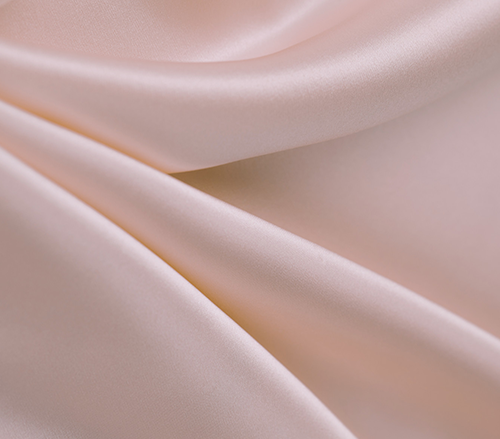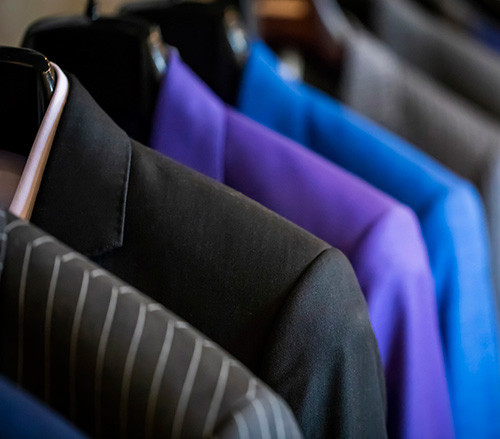
Applications
Fuju has a number of doctors and masters, focusing on product applications in each field, and providing solutions for many customers
The popularity of popular colors in home textiles further influences and determines the design, selection, production and application of popular fabrics. In recent years, the popular trend of home textile fabrics is mainly reflected in the following 5 aspects
一. Functionality and high-tech
With the strengthening of environmental protection awareness, people’s requirements for textiles have gradually expanded from being soft and comfortable, moisture-absorbing, breathable, windproof and rainproof to mildew and mothproof, Functional and environmental aspects such as deodorization, UV resistance, radiation protection, flame retardant, antistatic, health care and non-toxicity, and the development and application of various new fabrics and the development of new processes and new technologies have gradually achieved these requirements. Functional household textiles refer to household textiles with special functions, such as safety functions (antibacterial, flame retardant, anti-static, etc.), comfort functions (softness, moisture absorption, breathability, dryness, smoothness, etc.), and hygiene functions (physical therapy, anti-decubitus, etc.) Anti-mites, anti-mosquitoes, etc.). At present, my country's functional home textiles are mainly concentrated in health care effects, such as antibacterial, deodorant, anti-mite products, and healthy sleep bedroom products.
1. Antibacterial home textile fabric
Antibacterial textile fabrics play an extremely important role in preventing the invasion of germs. Daily necessities made of antibacterial functional textile fabrics have gradually become popular. Pay attention to it, and with the development of technology, it radiates extensively and deeply into the details of life. For example, textiles and household items made of anti-mite and anti-bacterial fibers can not only suppress mites and repel mites, effectively prevent the occurrence of dust mites-related skin diseases, but also anti-bacterial and inhibit the reproduction of bacteria, thereby improving people’s living environment purpose. Antibacterial home textiles can be obtained by coating or resin treatment on the fabric. Natural pure textiles are commonly used This finishing technique. It is also possible to add an antibacterial agent to the fiber stock solution for blending spinning, or to graft common fibers with an antibacterial agent to prepare an antibacterial fiber, and then weave the antibacterial fiber to obtain an antibacterial home textile. At present, the widely used antibacterial products include bedding, cotton, bed sheets, towels, towel quilts, cotton blankets, carpets, bathrobes, rags, sofas, wall coverings, mops, tablecloths, napkins, shower curtains, etc.
2. Antistatic home textile fabric
In the field of home textiles, synthetic fibers make up for the shortage of natural fibers and are used in large quantities, but their moisture absorption is poor and they are easy to accumulate static electricity. Dust suction, contamination, poor air permeability, and in severe cases can cause electric shocks and even fires. Therefore, people hope that textiles can have antistatic properties, that is, the fabric itself can eliminate static electricity. At present, there are two antistatic methods: one is to carry out antistatic finishing on the fabric. In the finishing, an antistatic finishing agent is used to introduce a layer of hydrophilic film on the surface of the fiber, which can improve the moisture absorption of the fabric and reduce the friction coefficient. And the surface specific resistance; the second is to first make the fibers into conductive fibers, and then weave the conductive fibers into fabrics. Antistatic fabrics have been well used in home textile products such as bedding and curtains.
3. Anti-ultraviolet home textile fabric
Ultraviolet rays are harmful to the human body. If people are exposed to ultraviolet rays for a long time, dermatitis, pigmentation, skin aging will accelerate, and even cancer will occur. If textiles can be made into anti-ultraviolet textiles, the harm to the human body will be greatly reduced. There are two treatment methods for anti-ultraviolet radiation: one is finishing method; the other is to directly make anti-ultraviolet fiber and then weave the fiber into fabric. The so-called anti-ultraviolet fiber is made into an anti-ultraviolet fiber by melt-spinning an ultraviolet shielding agent. The matrix has synthetic or artificial fibers. The fabric of this fiber has a UV shielding rate of over 95% and is suitable for making curtains and other household anti-ultraviolet textile.
Second, flower type
The design style of fabrics has made breakthroughs in pattern, pattern, and color design. It strives for new features of fashion and popularity, and pays attention to The ingenious combination of various styles reflects the diverse styles.
The currently widely popular fabric patterns are through jacquard, printing, embroidering, planting, ginning, cutting, burnt-out, baking, spraying, It is processed by decals and grinding flowers. For example, printed fabrics are special products that combine technology and art. In some cases, the commodity value of printed fabrics largely depends on the pattern design and printing effect. Novel and unique pattern designs can give the fabric vitality. , The same fabric is printed with different patterns, which reflects different wearing effects. There are many new changes in the printing process, such as the use of paint, gold and silver threads, pad dyeing, etc., combined with jacquard, to create a rich visual effect.
linen fabric structure has various changes. The composite structure produces stripes and squares. The use of the organization and stripes brings a rich appearance. The pattern combined with the yarn-dyed technique makes the linen fabric richer in color and pattern.
three-dimensional fabric is also a popular focus in home textiles. In terms of the composition of the fabric, pure cotton occupies an important position in the product, and the double-sided structure of cotton fabric is paid attention to. Double-layer jacquard sandwich weaving, or through the use of double-layer organization with yarn and finishing, the front and back sides are closely connected. But the style is different, one is delicate and smooth, and the other is plump and soft. The composite process combines the two fabrics, and simultaneously performs double-sided and double-color to increase the effect. Some of the surface of the fabric has been colored and coated, and some have been washed with water, so that the fabric has a double-sided and two-color appearance and protective function. The double-layer structure of the linen fabric forms a double-sided fabric with a thick and firm feel. The pattern is formed by color matching or different colors of warp and weft yarns.
三. Blended spinning
is the style of rich fabrics. The blended and interwoven fibers are more extensive, such as blends of natural colored cotton and linen or wool. The application of bamboo fiber on cotton fabrics has been strengthened, giving the fabric a new appearance and internal quality. The ratio of cotton to traditional chemical fiber has changed. For example, the blending with polyester shows a downward trend, but colored polyester is often used in inserts to bring various stripes and glitter effects. The characteristics of flax, ramie and hemp can be fully expressed. The main fibers used in blending or interweaving are cotton, viscose, tencel, bamboo fiber, real silk, etc., such as linen and cotton blended interwoven, linen and viscose interwoven jacquard, hemp and Cotton Blend. Hemp and Tencel are woven together with a satin structure, and the surface presents the luster of Tencel, which plays the functions of moisture absorption, ventilation and health care of hemp. High-count linen yarn is interwoven with jacquard, the pattern is more delicate and realistic.
In the use of raw materials, the trend of diversification has been demonstrated to a certain extent, such as the blending of silk and chemical fiber, cotton, wool, hemp and other fiber materials. Interweaving is further embodied. The blending of a variety of raw materials improves the performance of the fabric: silk and linen are interwoven, which not only improves the hand feel of the fabric, but also gives the fabric a natural hemp texture and reduces the shrinkage of the fabric; the combination of soybean fiber and silk achieves a soft and bright The gloss and light drape.
four, thin and light
home textile crystal fabric presents natural, soft and comfortable properties. Lightweight fabrics are the new favorites of the home textile market, showing a refined and elegant style. Soft and clean appearance and concise stripes are important performances of light cotton fabric; the light and thin fabric style presents diversified texture effects, light pile finishing, slight distressing treatment, wool-like effect, rustic country style, etc. The fabric pursues the innovation of traditional style, focusing on the combination of color, raw material, yarn, pattern, hand feeling, style and so on.
The appearance of light linen fabric breaks through the tradition. Through the rich changes of colors and patterns, it presents a simple and elegant feeling, and the delicate texture is further strengthened. The improvement and enhancement of its comfort are particularly important. Blending and developing the unique texture of hemp with other fibers has become one of the keys for hemp fabrics to adapt to the trend.
-
 The finishing to improve the performance of silk fabrics mairaed moreFunctional finishing of silk fabrics
The finishing to improve the performance of silk fabrics mairaed moreFunctional finishing of silk fabrics -
 1. The mechanism of organosilicon defoamer: The ability of sraed morePrinciple, type and application of silicone defoamer
1. The mechanism of organosilicon defoamer: The ability of sraed morePrinciple, type and application of silicone defoamer -
 wool fiber under the humid and hot conditions, through the rraed moreThe purpose and mechanism of woolen sweater felting
wool fiber under the humid and hot conditions, through the rraed moreThe purpose and mechanism of woolen sweater felting -
 Shinchem SS 6175 and Shinchem SS 6186 can be used for non-irraed moreNon-iron finishing application scheme for shirts and suits
Shinchem SS 6175 and Shinchem SS 6186 can be used for non-irraed moreNon-iron finishing application scheme for shirts and suits
